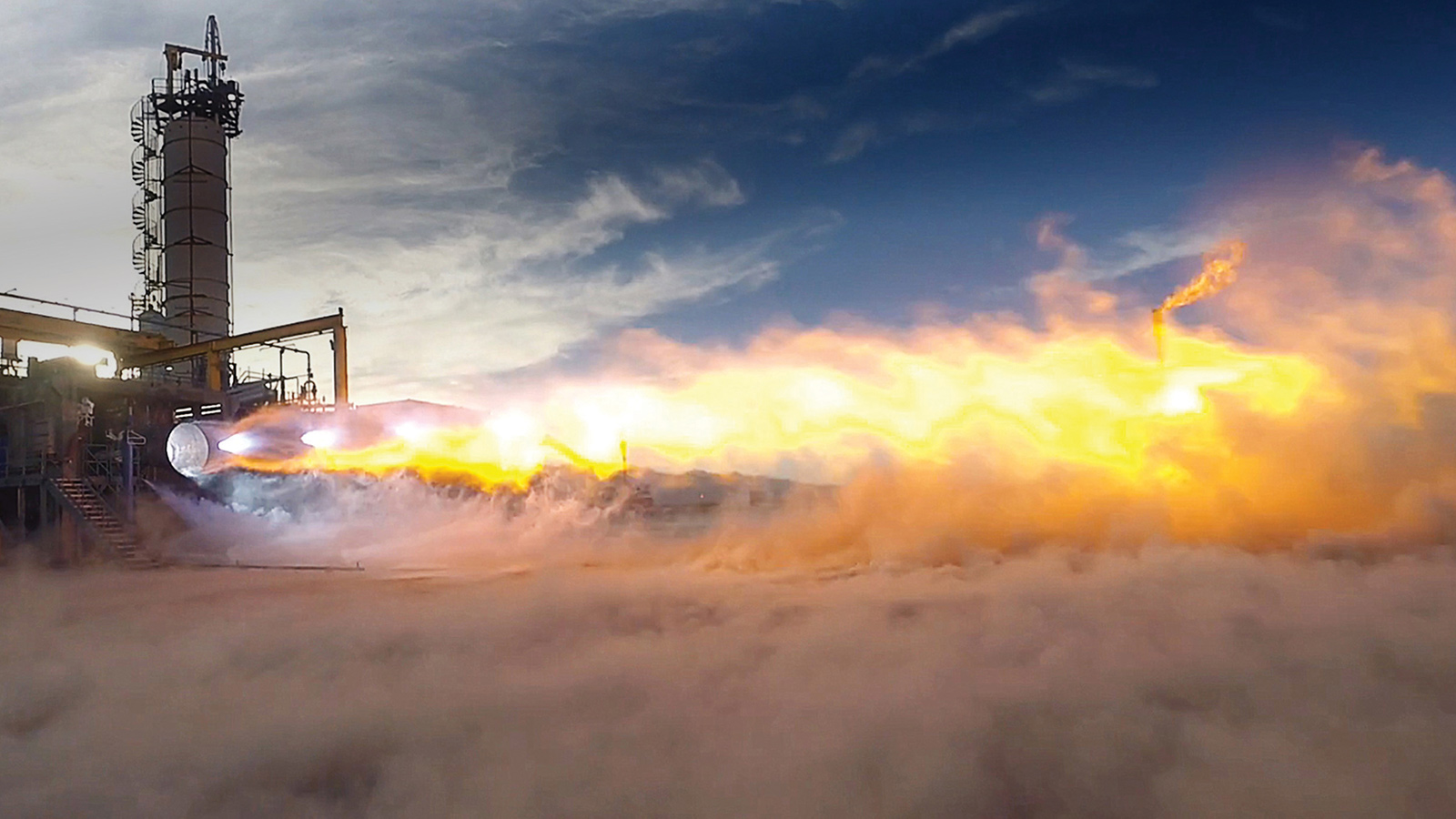Stay Up to Date
Submit your email address to receive the latest industry and Aerospace America news.
The Liquid Propulsion Technical Committee works to advance reaction propulsion engines employing liquid or gaseous propellants.
Liquid propulsion development saw significant progress in support of NASA’s Human Exploration and Operations Mission Directorate, commercial launch applications and in-space small thruster engines.
In February, SpaceX’s Falcon Heavy, comprised of three Falcon 9 stages, had a near flawless launch and landed both side boosters; the third booster, the core, was lost at sea. The cargo, a Tesla Roadster, was inserted into a heliocentric orbit.
As part of the Space Launch System program, NASA’s Stennis Space Center in Mississippi starting in February carried out a series of developmental RS-25 rocket engine hot-fire tests with a new flight controller unit, powering the engine to its highest power level ever. In support of the Exploration Mission-1 flight of the Orion crew and service module, final integration of the flight European service module propulsion subsystem was completed at Airbus in Bremen, Germany, in June. In September, final integration and checkout of the flight crew module reaction control system propulsion subsystem was completed at NASA’s Kennedy Space Center in Florida.
NASA’s Commercial Crew Program made significant progress. Early in the year, Aerojet Rocketdyne completed delivery of 12 MR-104J engines for Boeing’s Crew Space Transportation-100 Starliner spacecraft. In June, the Crew Dragon capsule for SpaceX’s flight test, Demo-1, was delivered to NASA’s Plum Brook Station in Ohio, where it underwent testing in the In-Space Propulsion Facility under simulated high-altitude conditions.
Within NASA’s Commercial Resupply Services program, both SpaceX and Northrup Grumman completed flights to the International Space Station. Of note was the reboost of ISS in July by the Northrop Grumman OA-9E Cygnus spacecraft. The 50-second demonstration burn was the first time a U.S. spacecraft has raised the orbit of ISS since the retirement of the space shuttle.
Stennis has also been instrumental in supporting hot-fire testing of other government-sponsored programs, such as DARPA’s Experimental Spaceplane and the joint NASA-U.S. Air Force Hydrocarbon Boost technology demonstrator. As part of DARPA’s XS quick response engine demonstration, Aerojet Rocketdyne fired its AR-22 booster rocket engine 10 times in 240 hours in June and July, showing the feasibility of rapid recycling of the engine to enable a reusable launch vehicle capable of high-tempo flight operations.
Additionally within the private sector, Blue Origin continued testing toward completing qualification of its 2,400 kilonewton (550,000 pound-force) BE-4 engine.
In August, the company reported that the new expander cycle design of the oxygen-hydrogen BE-3U upper stage engine had undergone more than 700 seconds of hot-fire testing. Hot-fire testing of Gloyer-Taylor Laboratories’ SSE-5k LOX/LCH4 engine verified the predicted high combustion stability margin, clearing the way toward reliable engine scaling and high performance.
In small thruster development, Aerojet Rocketdyne completed hot-fire testing of a new in-space engine designated ISE-100 in May; the engine performed tests representative of potential robotic lunar lander missions and accumulated 75 individual tests, 774 pulses and more than 500 seconds of hot-fire time. Launched in May, NASA’s Mars InSight mission incorporated a series of small thruster modules (comprised of Aerojet Rocketdyne’s MR-111C and MR-106E thrusters) critical to the cruise phase and atmospheric entry. In addition, there are 12 MR-107N engines, each generating 222 newtons of pulsed thrust to ensure a smooth landing.
In Europe, Ariane Group continued developing its cryogenic propulsion systems for the European launcher Ariane 6. The lower stage Vulcain 2.1 engine and the upper stage Vinci engine entered their final qualification campaigns in October and April respectively. In the technology domain, their 100 kilonetwon thrust class Expander Technology Integrated demonstrator for next-generation upper stage engines began a six-month hot-fire test phase.
Also this year, the Japan Aerospace Exploration Agency continued development and testing of its LE-5B-3 and LE-9 engines.
Contributors: David J. Coote, Paul Gloyer, Andy Hoskins, Kevin Lohner, William M. Marshall, Matthieu Masquelet and Dieter Preclik
Photo: Blue Origin tests a BE-4 engine in Texas. Two BE-4s will power the booster stage of each United Launch Alliance Vulcan Centaur rocket, the company announced in September. Credit: Blue Origin
Stay Up to Date
Submit your email address to receive the latest industry and Aerospace America news.




